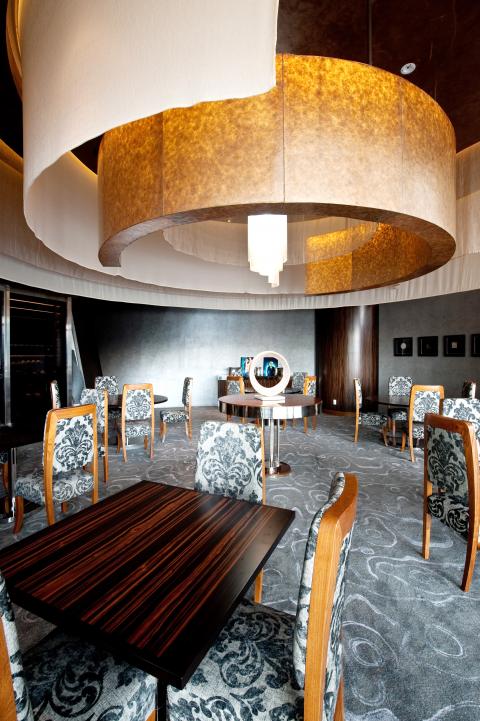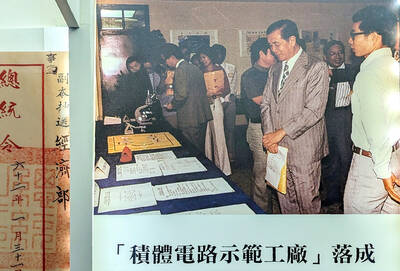On January 22, the 2013 Miele Guide to the best restaurants in Asia was launched in Singapore. This guide, now in its fifth year, is part of a larger trend to redress the balance between Asia and the West as regards accurate and objective listings of places that serve excellent food. Taiwan may not have made it into the coveted ranks of the Top 20 list of restaurants, but 20 are listed among the 500 recommended restaurants from 17 countries around the region.
Restaurant listings are nothing new, with the venerable Michelin guide (the one that today awards those coveted stars) dating back to the start of last century. Asia though, has been, until very recently, very much on the fringe. But with an increasing number of outstanding chefs emerging from Asia, a greater respect for non-European culinary traditions, and of course the region’s growing wealth, Asia can no longer be ignored by serious foodies.
One of the greatest challenges faced by publications like The Miele Guide is the sheer diversity of cuisines that can be found in the region, as well as widely varying ideas of what constitutes an outstanding food experience. While the original Michelin guide mostly considers establishments at the very top end of the market, The Miele Guide aims for something a little more democratic.

Photo courtesy of The Miele Guide / The Ate Group
DEMOCRATIC APPROACH
Speaking with the Taipei Times last week, Aun Koh, Co-Founder and Executive Director of The Ate Group and Co-Founder of The Miele Guide, described the scope of the publication.
“We publish a guide that isn’t just about fine dining. That is one of the problems that we have to overcome when we are introducing ourselves to people for the first time … We draw the line at hawker stalls. This is a guide for restaurants. You need to have four walls, but restaurants [listed in the guide] can take all kinds of forms. Our mix ranges from really grubby but amazing food kinda places to super popular classic family places to the high-end gastronomic temples,” Koh said.
This democratic approach applies to the selection process as well. There are four rounds of judging, the first being the creation of a shortlist of best restaurants as determined by the region’s top restaurant critics and food writers. The second and third rounds are an online poll in which the public and a jury of food and hospitality professionals, along with prominent food lovers, will be invited to cast their votes. Only for the selection of the Top 20 does the guide send out anonymous inspectors in the manner of the original Michelin Guide.
PUBLIC PARTICIPATION
The public is also allowed to make nominations. According to Aun, this year, such nominations numbered nearly 800, greatly expanding the shortlist. The total pool of restaurants that was voted on numbered 1,500 restaurants. In the voting, more than 22,000 members of the public logged on to The Miele Guide Web site to vote, this in addition to a jury numbering around 15,000, mostly, but not exclusively based in Asia.
This democratic model for selection means that the selection in The Miele Guide can be very fluid. Put another way, Aun said that the guide provides a snapshot of what restaurants are trending in the region.
This method of selection may deprive The Miele Guide of the kind of heft of the Michelin uide, but it still provides even well-established names with valuable recognition and exposure.
Maxime de La Grange Sury, Director of Food and Beverage at the Far Eastern Plaza Hotel, Taipei (台北遠東國際大飯店), said: “We think the most important reviews come directly from our diners, and probably those who voted for us did leave with a good impression.” The hotel’s Marco Polo Restaurant is among the restaurants selected as among the best in Taiwan. Sury added that something like The Miele Guide was especially important for a place like Taiwan, which does not have dedicated English-language restaurant guides like the Michelin guides for Hong Kong and Japan.
GLOBAL EXPOSURE
International exposure of the chef or the restaurant has a big impact on whether a restaurant makes it into the guide. For Taiwan, restaurants such as Din Tai Fung (鼎泰豐) and Shin Yeh (欣葉餐廳) might have some local foodies rolling their eyes at the almost cliched presence of these big brands, when there are so many other contenders. But when people talk about Taiwan, these are the names that inevitably crop up. This might be because many good restaurants only get coverage in dedicated food blogs and culinary magazines, with little attention paid by the mainstream media.
“What international exposure does is that it makes consumers more aware of a restaurant, so they are more likely to visit the place. If a restaurant is written about in magazines or newspapers around the world, people visiting Taipei will say ‘I want to visit that place because I read about it,’ and that means there is a greater chance a person will have tried it, will have understood it, liked it and voted for it … I would really like to see more restaurants from Taiwan or Korea, but the amount of media coverage on the top restaurants is not that frequent. You don’t see articles every weekend about top Taiwanese gourmet haunts, but you do see that for restaurants in Tokyo,” Koh said.
LOCAL PRIDE
Apart from the media, the attitude of locals to their restaurants can also have a powerful effect. Koh gave the example of the Philippines. “I have noted that every time the vote comes around, the social media scene [in the Philippines] just explodes. They are so proud of their chefs and their restaurateurs that every single [food] blogger is campaigning for their country. They are telling all their readers that they must vote so that [restaurants] in the Philippines can get better known internationally. There is a lot of pride, and they champion not just one chef or one restaurant,” Koh said, adding that The Miele Guide hoped to encourage similar interest and active endorsement of local culinary achievement by people in Taiwan. Only in this way will the word get out to a regional, or even international audience.
“People in Taiwan talk about street food, the food in the night market. That is where Singapore was five, six years ago … but I know there are many very talented chefs who are doing amazing things [in Taiwan],” Koh said.
Given some of the exceptional food available at establishments around Taiwan, it is a little disheartening to note that all 20 of the restaurants for Taiwan in The Miele Guide are located in Taipei. This is likely to be due to the poverty of English-language information about establishments outside the capital, which keeps many fine establishments obscured from the international community.
Speaking about his own impression of Taiwan’s culinary scene, Koh said he had been particularly impressed by the quality of the produce. “The quality that [Taiwan] has in terms of produce is so much higher than what we have in Singapore and Malaysia, or even Indonesia. The level [of quality] is up there with Japan. It was stunning to me going to the markets to see what’s available to chefs [in Taiwan], but which they often don’t exploit.”

Oct. 27 to Nov. 2 Over a breakfast of soymilk and fried dough costing less than NT$400, seven officials and engineers agreed on a NT$400 million plan — unaware that it would mark the beginning of Taiwan’s semiconductor empire. It was a cold February morning in 1974. Gathered at the unassuming shop were Economics minister Sun Yun-hsuan (孫運璿), director-general of Transportation and Communications Kao Yu-shu (高玉樹), Industrial Technology Research Institute (ITRI) president Wang Chao-chen (王兆振), Telecommunications Laboratories director Kang Pao-huang (康寶煌), Executive Yuan secretary-general Fei Hua (費驊), director-general of Telecommunications Fang Hsien-chi (方賢齊) and Radio Corporation of America (RCA) Laboratories director Pan
The consensus on the Chinese Nationalist Party (KMT) chair race is that Cheng Li-wun (鄭麗文) ran a populist, ideological back-to-basics campaign and soundly defeated former Taipei mayor Hau Lung-bin (郝龍斌), the candidate backed by the big institutional players. Cheng tapped into a wave of popular enthusiasm within the KMT, while the institutional players’ get-out-the-vote abilities fell flat, suggesting their power has weakened significantly. Yet, a closer look at the race paints a more complicated picture, raising questions about some analysts’ conclusions, including my own. TURNOUT Here is a surprising statistic: Turnout was 130,678, or 39.46 percent of the 331,145 eligible party

The classic warmth of a good old-fashioned izakaya beckons you in, all cozy nooks and dark wood finishes, as tables order a third round and waiters sling tapas-sized bites and assorted — sometimes unidentifiable — skewered meats. But there’s a romantic hush about this Ximending (西門町) hotspot, with cocktails savored, plating elegant and never rushed and daters and diners lit by candlelight and chandelier. Each chair is mismatched and the assorted tables appear to be the fanciest picks from a nearby flea market. A naked sewing mannequin stands in a dimly lit corner, adorned with antique mirrors and draped foliage

The election of Cheng Li-wun (鄭麗文) as chair of the Chinese Nationalist Party (KMT) marked a triumphant return of pride in the “Chinese” in the party name. Cheng wants Taiwanese to be proud to call themselves Chinese again. The unambiguous winner was a return to the KMT ideology that formed in the early 2000s under then chairman Lien Chan (連戰) and president Ma Ying-jeou (馬英九) put into practice as far as he could, until ultimately thwarted by hundreds of thousands of protestors thronging the streets in what became known as the Sunflower movement in 2014. Cheng is an unambiguous Chinese ethnonationalist,